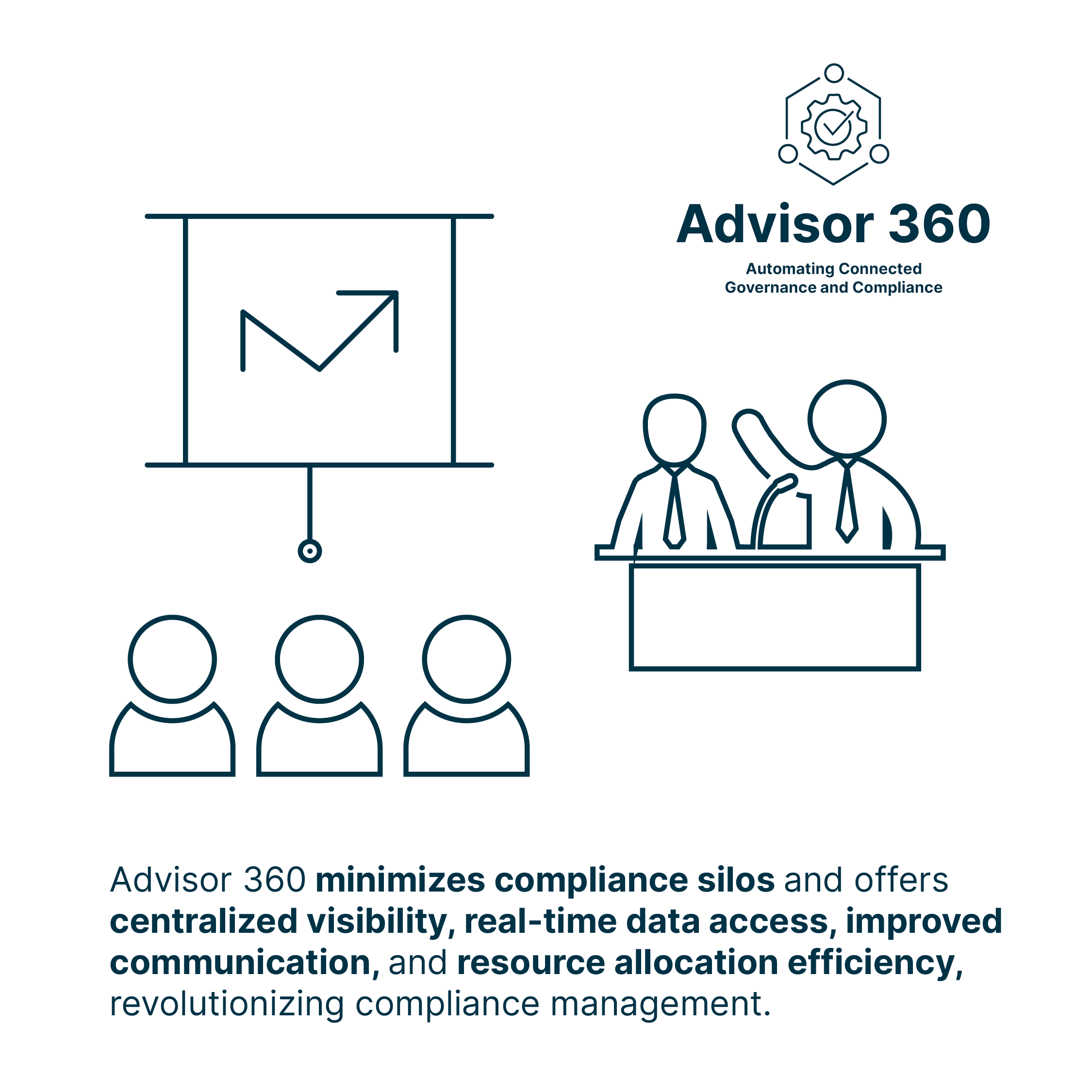In the complex landscape of modern business operations, compliance with regulations, industry standards, and internal policies are of paramount importance. However, the challenge arises when organizations grow and evolve, often leading to the emergence of what is known as compliance silos. These silos refer to departments within an organization that handles compliance matters independently, without effective communication or coordination with other parts of the company. While having specialized teams to manage various compliance aspects can offer expertise, it can also inadvertently lead to inefficiencies, redundancy, and misaligned efforts.
Understanding compliance silos involves recognizing their impact on an organization's overall compliance strategy, risk management, and operational efficiency. Here are some key points to consider:
- Isolated Focus: Compliance silos often develop due to the need for expertise in specialized areas. However, this can result in a limited focus on only one aspect of compliance, neglecting the broader picture. This lack of coordination can lead to blind spots in understanding how different compliance areas interact and impact each other.
- Communication Breakdown: When each compliance silo operates independently, there is often a breakdown in communication. Teams may not be aware of what other departments are doing, and this can result in duplication of efforts, contradictory actions, and missed opportunities for collaboration.
- Inefficient Resource Allocation: Maintaining separate compliance teams for each regulatory domain can be resource intensive. Duplication of efforts, redundant tools, and overlapping processes can lead to wasted time, effort, and financial resources.
- Increased Risk: Compliance silos can create compliance blind spots, making it difficult to identify potential risks that span across different areas. This can leave the organization vulnerable to regulatory fines, reputational damage, and other negative consequences.
- Lack of Holistic View: An organization-wide compliance strategy requires a holistic view of all regulatory requirements and their interconnectedness. Compliance silos hinder the ability to develop a comprehensive approach that addresses compliance at both the micro and macro levels.
- Difficulty in Data Management: Compliance often relies on accurate and up-to-date data from various sources. When each compliance silo manages its own data, inconsistencies can arise, making it challenging to maintain accurate records and generate meaningful reports.
To address the challenges posed by compliance silos, organizations should strive for greater integration, communication, and collaboration across their compliance functions. This involves breaking down barriers between compliance teams, fostering a culture of information sharing, and implementing technology solutions that centralize data and reporting.
One such solution is Adnovum’s Advisor 360, a connected IT governance and compliance solution which automates tasks, centralizes documents, and monitors compliance across departments to streamline audits, minimize risks, and maintain regulatory compliance.
How Adnovum’s Advisor 360 Helps in Overcoming Compliance Silos

- Gain a Centralized Perspective on All Compliance Activities: Eliminate blind spots in compliance by accessing a centralized view of all activities. This makes it easier to identify potential risks and understand the connections between different touchpoints.
- Leverage Consolidated, Near Real-Time Data from Multiple Sources: Access timely, streamlined data that provides actionable insights. Users of the Advisor 360 solution can now make crucial decisions based on up-to-date information, rather than relying on outdated data. This consolidated data remains accurate, accessible, and current, ensuring that all users are well-informed and aligned.
- Strengthen and Unify Communication Across Departments: Enhance communication across various departments through a centralized dashboard that offers a comprehensive view of compliance information. This dashboard is accessible to all employees, facilitating more effective communication, reducing duplicated efforts, and minimizing miscommunication.
- Optimize Resource Allocation Efficiency: Streamline processes with the Advisor 360 solution to ensure efficient and effective allocation of resources across compliance teams. By aggregating resource allocation, this solution prevents scenarios of overallocation or underallocation, leading to better resource utilization.
In conclusion, understanding compliance silos is crucial for businesses aiming to establish effective and efficient compliance management. By acknowledging the potential pitfalls of isolated compliance efforts, organizations can work towards a more cohesive and coordinated approach to compliance, ultimately mitigating risks, optimizing resources, and enhancing their overall operational resilience. To tackle the challenge of compliance silos, businesses could consider turning to comprehensive compliance management solutions that integrate compliance processes across departments and functions. Reach out to Adnovum’s team of compliance experts today to break down your organization’s compliance silos with Adnovum’s Advisor 360 automated compliance solution.
📩 Sign up for our newsletter and gain access to exclusive executive insights and event invitations.





